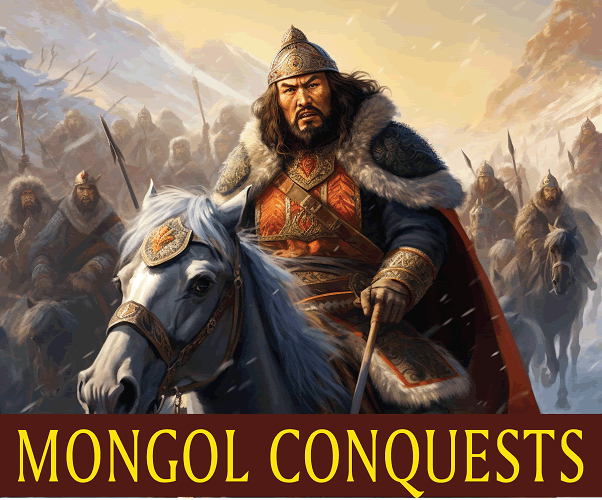The success of the Mongol Horde, led by Genghis Khan and his successors, can be attributed to a combination of factors that made them a formidable military force during the 13th century. Their success in conquering vast territories across Eurasia can be explained by the following key factors.
Leadership and Organization:
- Genghis Khan's Leadership: Genghis Khan (also spelled Chinggis Khan) was a brilliant military strategist and leader. He united the Mongol tribes under his rule, bringing a sense of cohesion and discipline to a previously fragmented people.
- Military Organization: Genghis Khan introduced a highly effective military organization. The Mongol army was divided into units called tumens, which consisted of 10,000 cavalrymen each. This structure allowed for flexibility and rapid response to changing battlefield conditions.
Cavalry Superiority:
- Mongol Horsemen: The Mongols were renowned for their exceptional cavalry skills. They were skilled horse riders from a young age, and their mobility on horseback gave them a significant advantage on the battlefield.
- Horse Archery: Mongol warriors were expert archers, able to fire arrows with great accuracy from horseback while moving. This hit-and-run tactic made them extremely effective in both open field battles and hit-and-run raids.
Tactics and Strategy:
- Scorched Earth Tactics: The Mongols frequently employed scorched earth tactics, devastating the lands they invaded. This made it difficult for their enemies to sustain their armies and civilian populations.
- Use of Siege Warfare: Despite their reputation as cavalry-based warriors, the Mongols also developed effective siege warfare tactics and technologies, allowing them to conquer fortified cities and castles.
Communication and Intelligence:
- Yam System: The Mongols established a relay messenger system known as the Yam, which enabled rapid communication across their vast empire. This system allowed them to coordinate armies and receive intelligence from various fronts.
- Espionage: Mongol spies infiltrated enemy territories to gather information on enemy strengths, weaknesses, and strategies.
Innovation in Warfare Through Use of Gunpowder: The Mongols were among the first to use gunpowder-based weapons, such as explosive devices and early firearms, in their campaigns.
Adaptability:
- Adaptation to Different Terrains: The Mongols were adaptable in various terrains, from the open steppes to mountainous regions and deserts. They adjusted their tactics and equipment as needed.
- Incorporation of Conquered Peoples: The Mongols were not always ruthless conquerors. They often incorporated skilled individuals from conquered regions into their ranks, benefiting from their expertise in various fields, including administration and siege engineering.
Political Diplomacy and Alliances:
- Use of Diplomacy: The Mongols sometimes employed diplomacy and the threat of military force to secure alliances and tribute from neighboring states, reducing the need for direct conflict.
- Coalition Building: Genghis Khan and his successors occasionally formed temporary alliances with different tribes or states to achieve their military and political objectives.
Psychological Warfare via Terror Tactics: The Mongols cultivated a fearsome reputation for brutality, using terror as a psychological weapon to intimidate their enemies and discourage resistance.
Internal Unity: The Mongols maintained a sense of unity and loyalty among their own ranks, which was crucial in sustaining their military campaigns across vast distances.
Division Among Enemies: The Mongols often took advantage of divisions and rivalries among their enemies, weakening their adversaries and making conquest easier.
The Mongol Horde's success was not solely due to military prowess but also to a combination of factors such as leadership, adaptability, innovation, and effective communication. Their empire became the largest land empire in history, stretching from Asia to Europe, and their impact on world history is still evident today.
|








